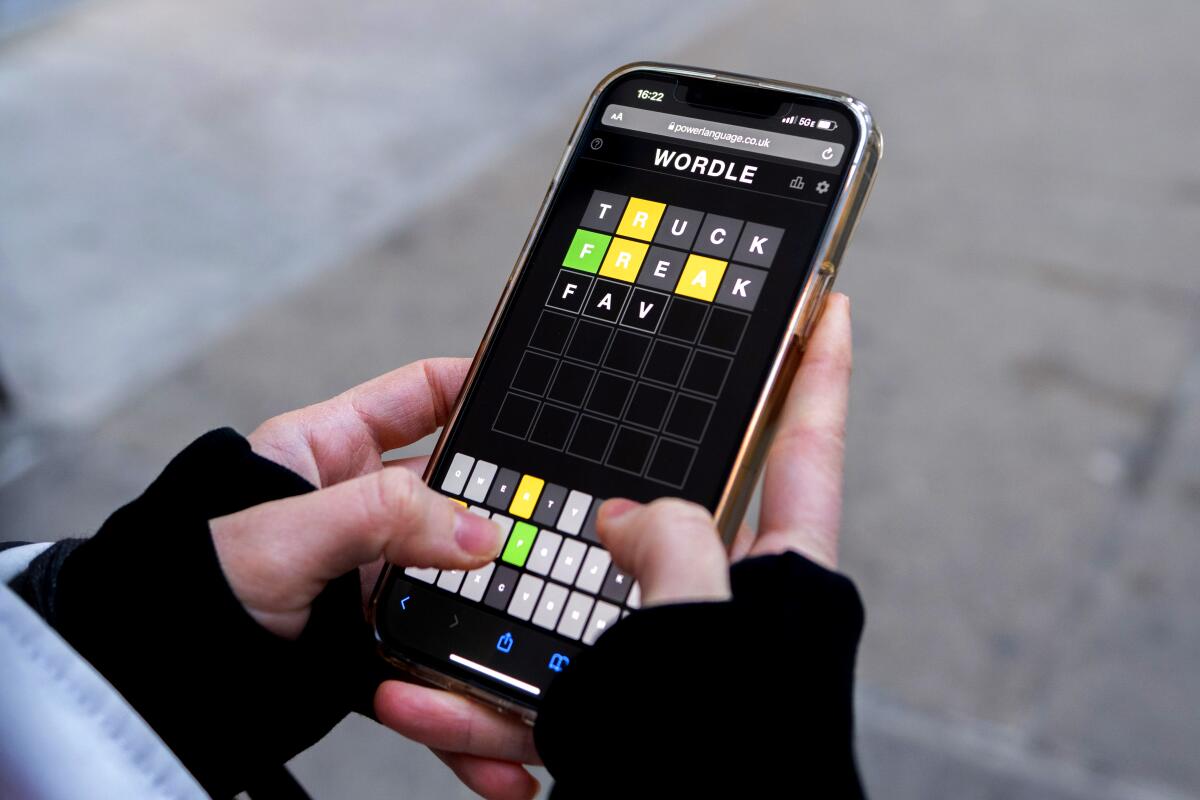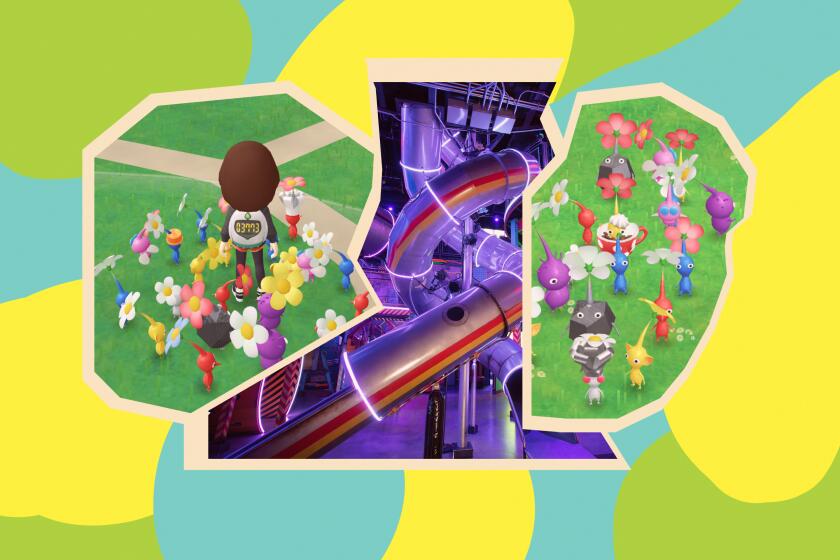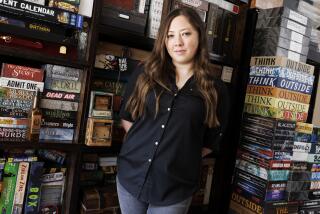Op-Ed: The word on Wordle: It is bringing people together by letting us see into each other’s minds

- Share via
As a professional philosopher of games (yes, really), when my social media feed was flooded with incomprehensible, five by six, Wordle grids, I had to figure out why people were so obsessed with the game. I played it, and my theory is that Wordle’s social energy is what makes it special. Those grids give us quick glimpses into other people’s minds.
Your first experience playing Wordle was probably like mine. It seems, at first glance, like a random guessing game, asking you to figure out the answer with no information.
For the record:
10:33 a.m. Jan. 21, 2022An earlier version of this article described the Wordle grid as being five by five. It is five by six.
But start playing, and you quickly see that isn’t the case. The game gives you a yellow square for a correct letter in the wrong place, and a green square for a correct letter in the right place. This feedback allows you to probe for information. You can manipulate your word choices on each step to hit high-frequency letters, scanning the alphabet efficiently to figure out the right word.
This early experience of Wordle is one of agency-expansion: You thought you had no real agency, but then realize that you have quite a bit. It’s a bit like limit hold ’em poker. When you learn the rules of limit hold ’em, it can sound like pure luck: A random deal, and then all you can do is bet, raise, check or fold? Then you figure out how much you can do with those moves, how you can use them to tease out bits of information from your fellow players. You can squeeze a lot of clever action through that little pipeline of possible moves.
If there’s a defining medium of our still-uncertain pandemic age, it’s games.
This experience of enlarged agency is common in puzzle games, and Wordle shares a lot of its DNA with older board and word games, such as Mastermind and the ’80s gameshow “Lingo.” What makes Wordle distinctive isn’t the core game mechanism itself, but the social life that it enables. The best thing about the game is the design of those shareable grids. They are packed with a huge amount of information — and drama.
Every game of Wordle is a specific arc of decision-making and each Wordle grid is a neat synopsis of someone’s path of action, failure, choice and success. You can glance at it and grasp the shape of the player’s struggle. You can see how they, for example, flailed painfully, got stuck and then suddenly figured out the answer in a triumphant flash.
It’s a sharp, quick window into another person’s mental process and a triumph of social graphic design. Interestingly, the Wordle grids weren’t shareable in the game’s original design. The grid was invented by a player and then adopted by the New Zealand community before being officially added into the game.
Here’s the funny thing about games: Even the coldest, most logical, most competitive game can be strangely intimate. Chess is brutal, but it’s also one of the closest experiences you’ll get to actual telepathy. Sometimes, you can figure out exactly what someone’s eight-step plan is and take exactly the right step to block it — unless they had looked one step further, laying a trap for you.
I want my niece to love reading as much as I do. She doesn’t. Arguments ensue. The experts’ advice? Chill out — kids read differently these days.
Games are unique as an art form because they work in the medium of agency. A game designer doesn’t just make a world; they make an alternate self for you. They tell you what you can do and what you should want in the game, giving you specific goals.
In normal life, other people’s cares and goals are diverse — and often opaque. By (usually) giving everyone the same objective, games artificially align our interests. This designed narrowness is what enables the strange intimacy of game-playing.
Every day, Wordle gives everyone the same challenge and the same tools to meet that challenge. When you glance at another player’s grid you can grasp the emotional journey they took, from struggle to likely victory, in one tiny bit of their day. All those yellow and green Wordle grids popping up on our screens give us a steady stream of small communions.
C. Thi Nguyen is a professor of philosophy at the University of Utah. He is the author of the book “Games: Agency as Art.” @add_hawk
More to Read
A cure for the common opinion
Get thought-provoking perspectives with our weekly newsletter.
You may occasionally receive promotional content from the Los Angeles Times.












